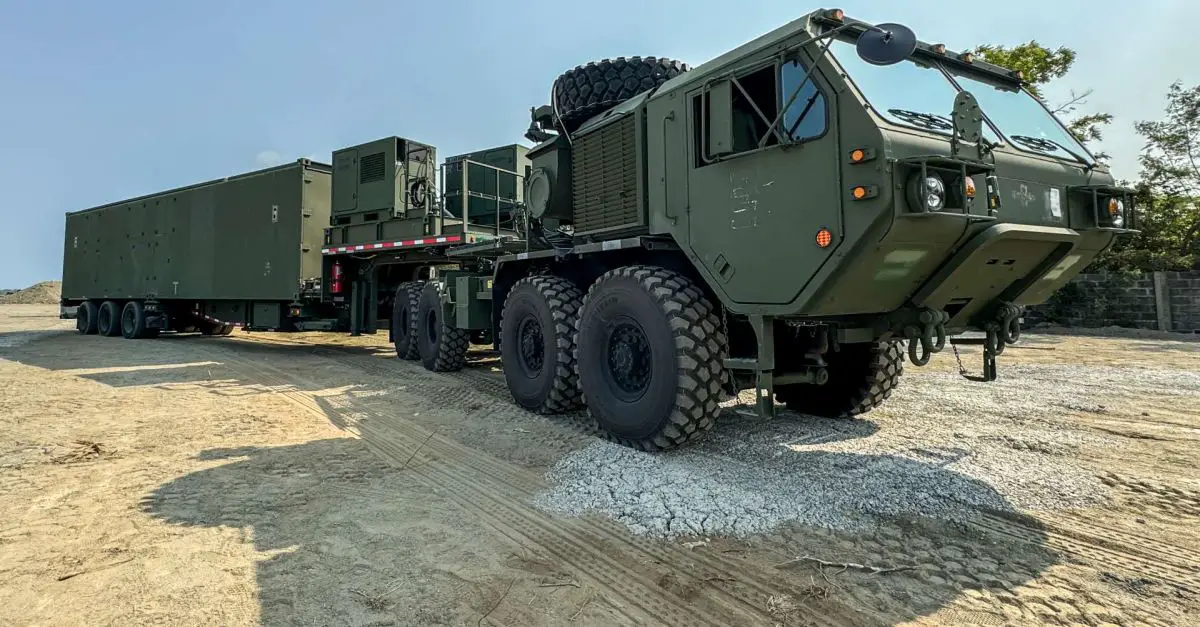Breaking News
China Sees US Mid-Range Capability MRC missile system deployment in Philippines as a threat.
China issued a stern warning to the Philippine government on Wednesday, July 31, 2024, regarding the deployment of the United States' Mid-Range Capability (MRC) missile system in the Philippines. China labeled the move a potential catalyst for geopolitical confrontation and an arms race in the region. Chinese Foreign Ministry spokesman Lin Jian, during a daily news briefing, urged countries to promptly withdraw these missile systems, emphasizing the necessity for peace and prosperity rather than military escalation in the region.
Follow Army Recognition on Google News at this link

U.S. Army Mid-Range Capability (MRC) Launcher from Charlie Battery (MRC), 5th Battalion, 3rd Field Artillery Regiment (Long Range Fires Battalion), 1st Multi-Domain Task Force arrives as part of the capability’s first deployment into theater on Northern Luzon, Philippines, April 8, 2024 (Picture source: U.S. DoD)
This warning comes in the wake of a historic deployment by the US Army's 1st Multi-Domain Task Force. On April 11, 2024, the task force successfully positioned the Mid-Range Capability (MRC) missile system, known as the "Typhon" missile system, in Northern Luzon, Philippines. This deployment was part of Exercise Salaknib 24, a collaborative military exercise aimed at enhancing interoperability, readiness, and defense capabilities alongside the Armed Forces of the Philippines.
The introduction of the MRC missile system marks a significant advancement in the US Army's strategic capabilities in the Indo-Pacific region. Originally developed as the Strategic Mid-range Fires System (SMRF) and later renamed the Midrange Capabilities System (SMC), the Typhon missile system is an integral part of the Army's Long-Range Precision Fires (LRPF) modernization initiative. This system utilizes existing Raytheon-produced Standard Missile-6 (SM-6) and Tomahawk missiles, which are adapted for ground launch by Army units.
The MRC Weapon System is intended to hit targets at ranges between the Army's Precision Strike Missile (PrSM) and the developmental Long-Range Hypersonic Weapon (LRHW) system. The Precision Strike Missile (PrSM) has a maximum range of about 300 miles, equivalent to approximately 480 kilometers, allowing for precise targeting of enemy positions. Meanwhile, the Mid-Range Capability (MRC) System, or Typhon, significantly extends this range, targeting distances between the PrSM and the Long-Range Hypersonic Weapon. The MRC is equipped to strike targets up to 1,725 miles, or about 2,775 kilometers, offering formidable reach in both strategic and tactical scenarios. The Long-Range Hypersonic Weapon (LRHW), which is still in development, further expands the Army's strike capabilities with a potential range of approximately 1,725 miles, or 2,775 kilometers, emphasizing speed and accuracy.
The MRC system incorporates Raytheon-produced SM-6 missiles, which are versatile in both offensive and defensive operations. These missiles have been modified for ground launch by Army units, enhancing their adaptability across different military contexts. Additionally, the system includes Raytheon-produced Tomahawk cruise missiles, known for their long-range precision strike capabilities.
With its ability to engage targets at various ranges, the MRC system significantly enhances the US military's defensive posture. The deployment in the Philippines represents a pivotal milestone, underscoring the US commitment to bolstering defense strategies in coordination with its allies in the Indo-Pacific region. While the US and the Philippines view this deployment as a means to strengthen regional security, Beijing perceives it as a threat that could destabilize the region. The Chinese government's response highlights the delicate balance of power in the Indo-Pacific and the potential for increased tensions resulting from military advancements and alliances.


























